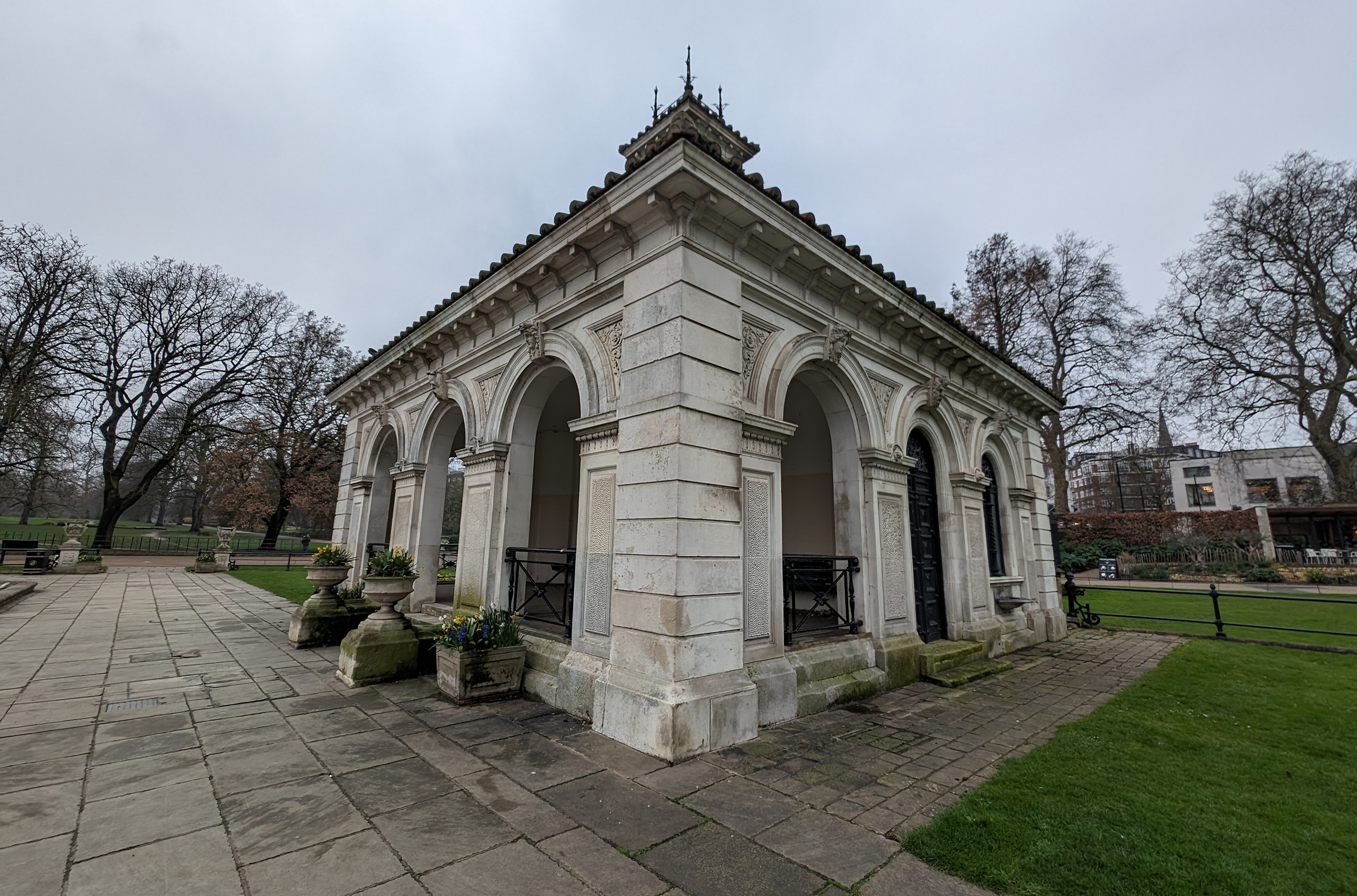 |
| (Image: © Tom's Guide) |
The Zenfone 10's design and the Asus ROG Phone 8's body have come together to create a phone that the typical flagship Android customer would like for its stunning display or how long it lasts on a charge. The issue is that this is an Ultra-branded phone without a camera and with an unexpectedly limited software support window, so consumers who want the greatest performance in these areas could choose to pass.
Pros and Cons
Pros:
- ✓ Huge, long-lasting battery
- ✓ Colorful and bright display
- ✓ Gimbal-stabilized camera
- ✓ Well priced
Cons:
- ✗ Weak photo processing
- ✗ Limited software updates
Normally, I don't react violently to new phones, but the Zenfone 11 Ultra still made me quite upset and angry. I had thought that the ROG Phone 8, which Asus redesigned for more mainstream consumers, would eventually replace the little Zenfone 10, which I really adore. However, it is now much simpler to recognize the true qualities of the new Ultra version given that Asus is still selling the Zenfone 10. And there are plenty of admirable qualities.
Those who follow phone trends closely will notice that the Zenfone 11 Ultra shares a lot of the same features that made the ROG Phone 8 series so good. It's a great template to work from, but the Zenfone will suit the average buyer far better due to its lower price, focus on usability and practicality, extraordinary battery life (in a year that's already seeing amazing battery stats), big and bright screen, and maximum performance.
Even while the Zenfone's gimbal-stabilized primary camera and a few new AI features are still entertaining additions, things like its software and photography are less spectacular. Continue reading this Asus Zenfone 11 Ultra review, though, to learn more about how amazing these features are and how they stack up against other possible phones on your shortlist.
Asus Zenfone 11 Ultra Specifications
| Feature | Specification |
|---|---|
| Display | 6.78-inch FHD OLED (2400 x 1080) |
| Refresh Rate | 1 - 120Hz adaptive plus 144Hz gaming mode |
| Rear Cameras | 50MP main, 13MP ultrawide, 32MP 3x telephoto |
| Front Camera | 32MP selfie |
| Chipset | Snapdragon 8 Gen 3 |
| RAM | 12GB/16GB |
| Storage | 256GB, 512GB |
| Battery | 5,500 mAh |
| Charging | 65W wired, 15W wireless |
| Software | Android 14 |
| Dust/Water Resistance | IP68 |
| Size | 163.8 x 76.8 x 8.9mm |
| Weight | 224 grams |
| Colors | Skyline Blue, Eternal Black, Misty Gray, Desert Sand |
Zenphone 11 Ultra: Cost and Date of Release
Pre-orders for the Zenfone 11 Ultra are available from March 14 until April 14, the day of the retail release, for $899/£869.
At current pricing, it costs $200 more than the Zenfone 10, but if you wanted to stick with Asus, it costs $100 and $300 less than the ROG Phone 8 and ROG Phone 8 Pro. Within the broader Android ecosystem, the $1,000 price tags of the Google Pixel 8 Pro and Samsung Galaxy S24 Plus are somewhat higher than that of the OnePlus 12, which is slightly less expensive at $800 for its base model.
DESIGN OF ZENFONE 11 ULTRA
Ultra phones are always bigger than their siblings within the same series, but in the case of the Zenfone, this difference is especially noticeable given how little the Zenfone was in the first place. As we'll see throughout this study, the enormous size difference of expanding from 5.9 to 6.7 inches has both benefits and drawbacks.
 |
| (Image credit: Tom's Guide) |
Details like the camera block's design and the USB-C port's peculiar alignment in the left corner of the device indicate that the Zenfone 11 Ultra is essentially the identical twin of the ROG Phone 8 series. Though the ROG Phone 8 may have the most subtle appearance of the ROG Phone series, the Zenfone isn't intended to be a dedicated gaming phone, and in my opinion, it has far more mass appeal.
Practical features like a Gorilla Glass Victus 2-clad display, one of the strongest display materials available for smartphone displays, are provided by the Zenfone. Like other top flagship phones, it has an IP68 rating, so maybe it will survive being submerged in sand, water, or another potentially invasive material without breaking.
 |
| (Image credit: Tom's Guide) |
In case you need cables, there's a headphone port on the bottom edge, which is uncommon yet useful. However, I discovered that I used the twin stereo speakers a lot while watching films and listening to music. These are among of the greatest smartphone speakers available right now, in my opinion; they provide rich sound without being overly tinny as some other phones sometimes do when the volume is turned up.
 |
| (Image credit: Tom's Guide) |
The Zenfone 11 Ultra is available from Asus in four different colorways: Misty Gray (seen above), Skyline Blue, Eternal Black, and Desert Sand. Regrettably, it appears that the availability of these options varies according on the country and version you purchase. However, putting that issue aside, the satin-like texture is fantastic—it feels well, provides a reasonable amount of grip, hides fingerprints, and looks beautiful—especially with the silver Asus and Zenfone logos present to provide some visual pop.
Zenphone 11 Ultra: Screen
Similar to its predecessor, the ROG Phone 8, the Zenfone 11 Ultra boasts a 6.7-inch Full HD OLED display. It has an adjustable refresh rate of 1 to 120 Hz by default, but it also has a unique 144 Hz mode that is accessible in games and programs that are compatible. This outperforms many of the phone's competitors, which only sometimes have a firm stop at 120 Hz.
 |
| (Image credit: Tom's Guide) |
We discovered that the Zenfone's screen is the brightest and most vivid of any of its competitors after lab testing. Its one shortcoming is color accuracy, where the newest phones from OnePlus and Google outperform it.
| Smartphone | Peak Brightness (nits) | DCI-P3 Color Gamut Coverage (%) | Color Accuracy (∆e, lower is better) |
|---|---|---|---|
| Asus Zenfone 11 Ultra | 1,671 | 109.8 | 0.26 |
| Google Pixel 8 Pro | 1,526 | 90.4 | 0.25 |
| OnePlus 12 | 1,115 | 78.9 | 0.2 |
| Samsung Galaxy S24 Plus | 1,363 | 81.5 | 0.27 |
SUPER ZENFONE 11: CAMERAS
When compared to its competitors, Asus' Zenfone 11 Ultra's camera choices is competitive. There are three cameras: a 13MP ultrawide camera, a 50MP primary camera with Asus's renowned 6-axis gimbal for increased stability, and two additional 32MP cameras for 3x zoom and selfie purposes. So let's take a closer look at how it stacks up against some of the greatest photography phones available.
 |
| (Image credit: Tom's Guide) |
Comparing the Asus 50MP primary camera to the iPhone 15 Pro Max reveals that the company prefers to capture images with a lower color temperature than its competitors. As seen below at Paddington Station, the Zenfone fails to catch as much information as the iPhone and makes gloomy British settings appear especially gray. However, it should be noted that the Asus defaults to taking primary camera shots at half the quality of the iPhone.
When compared to the Pixel 8 Pro, the Zenfone's ultrawide camera performs better, but it is still clearly limited in its field of vision. In this instance, the disparity in color tones isn't as extreme, but the Pixel still has a detail advantage.
Here's a comparison of a moorhen on a pond with the OnePlus 12, which shows you the obvious disparity in how much feather and water ripple detail the Asus lacks. Confusingly, the 32MP 3x telephoto camera actually snaps shots at 8MP, which flattens down images even more than we've already seen.
The HyperClarity function of the Zenfone 11 Ultra's zoom camera, which claims to sharpen photos between 10x and the maximum 30x zoom, may be a saving grace.
Although the Google phone's 5x zoom instead of the 3x claimed by the Pixel 8 Pro, we can see that the wording on this Blue Plaque is crisper in the Zenfone photo at 10x and then 30x. However, the Asus's color and brightness are still insufficient.
Remaining with the Pixel 8 Pro for a selfie comparison, the Asus practice of reducing detail is evident once more, maybe because to the fact that the 32MP selfie taken with the Zenfone also captures 8MP pictures. This time, at least, the image is bright enough, and the colors seem to represent my skin tone more accurately than the Pixel did.
Overall, the Zenfone's testing phase has been difficult. Thankfully, though, it makes some progress in terms of video recording abilities.
Zenphone 11 Ultra: Functionality
There are no rewards for spotting that the Zenfone 11 Ultra's SoC is the Snapdragon 8 Gen 3. With the exception of some Exynos-powered Galaxy S24 variants and the Tensor G3 CPU found in the Pixel 8 Pro, the 8 Gen 3 is the standard silicon for the best Android phones this year.
The regular edition of the Zenfone 11 Ultra comes with 12GB RAM and 256GB storage instead of the maximum 16GB RAM and 512GB storage, which is still rather ample when compared to competitors. With the exception of OnePlus, which provides the same RAM/storage specifications for both of its 12 models, the Galaxy S24, Pixel 8 Pro, and iPhone 15 Pro all come with a default configuration that reduces storage or RAM, if not both.
Smartphone Performance Benchmarks
| Smartphone | Geekbench 6 Score (Single-core / Multicore) | 3DMark Wild Life Extreme Unlimited (Score / FPS) |
|---|---|---|
| Asus Zenfone 11 Ultra | 1,259 / 5,866 | 5,107 / 30.5 |
| Google Pixel 8 Pro | 1,163 / 2,745 | 2,250 / 13.4 |
| OnePlus 12 | 2,188 / 6,525 | 5,073 / 30.3 |
| Samsung Galaxy S24 Plus | 2,272 / 7,083 | 5,019 / 30.0 |
The Zenfone's basic performance mode, which beats the comparatively low-powered Pixel 8 Pro but trails its other competitors by a significant margin, is seen to be holding the phone back when looking at the CPU benchmarks. In the near future, we plan to retetest the phone with the high performance option activated to see whether or not this fully utilizes the Snapdragon SoC.
The Zenfone 11 Ultra performs admirably on the GPU-based Wild Life Extreme Unlimited benchmark, at least while using its regular mode. In fact, it outperforms the iPhone 15 Pro Max and its sister, the ROG Phone 8, in terms of scoring among all the phones we evaluate here.
 |
| (Image credit: Tom's Guide) |
Certainly, playing Asphalt 9 on the Zenfone 11 Ultra was a lot of fun. You still receive the essential components of an amazing mobile gaming experience, even without the ROG Phone's cooling fan attachment or capacitive triggers
ZENFONE 11 ULTRA: POWER SUPPLIES AND CHARGERS
Not only does the Zenfone 11 Ultra inherit its 5,500 mAh battery from the ROG Phone 8, but it also has 65W wired and 15W wireless charging capabilities. The Zenfone lasted 17 hours and 52 minutes in automatic refresh rate mode and 19 hours and 40 minutes in manual mode because to its extra-large battery capacity. The only devices that do better than this are the OnePlus 12R and Asus' own ROG Phone 8. This is one of the finest performances we've ever seen.
It's more difficult to evaluate the Zenfone 11 Ultra's charging capabilities. Asus claims that a full charge would take 39 minutes, however it cannot be guaranteed in the same manner as other phones because there isn't a charger included in the package. Even though it's not included in the box, you should be able to easily achieve full charging rates on the Zenfone with a strong enough third-party charger because Asus claims that the 65W standard is compatible with USB Power Delivery.
SPECIAL FEATURES AND SOFTWARE OF ZENFONE 11 ULTRA
Asus has included a number of AI capabilities that users are accustomed to from previous phones in the Android 14 OS of the Zenfone 11 Ultra. Some of them, including in-call transitions and automated transcription while recording voice, are similar to Samsung's recent work with the Galaxy S24's Galaxy AI. Other uses, like enhanced noise cancellation, are new.
These are not as ambitious as what Google and Samsung are offering for their newest phones, but Asus highlights that all of these processes happen on the device itself, making it a more secure way to apply AI to cloud-based processing. Additionally, this means that these features cannot be abruptly turned off or paywalled, unlike the AI features that can still be enabled on the Galaxy and Pixel phones.
One unique feature of the Zenfone is that it offers three distinct Quick Settings styles: stock Android (similar to the Google Pixel), Asus Standard, which was present in earlier Zenfone models, and the new Asus Enhanced (which is displayed below), which offers distinct notification and settings windows with an iOS aesthetic based on which side you swipe down from the top of the display. Though it's probably more customization than is necessary, I won't ever be upset about having additional options in a phone's UI.
 |
| (Image credit: Tom's Guide) |
Additionally, you may give GlideX a try if you ever wish to utilize the Zenfone 11 Ultra in conjunction with another smartphone. Cross-platform capabilities like file sharing and unified controls are made available by this program, which works with both Macs and Windows. If you're ready to upgrade to the premium version, further functions are available. Interoperability features like this don't often function this well, thus Asus gets points for being more user-friendly than its competitors in this regard.
 |
| (Image credit: Tom's Guide) |
Regretfully, I must inform you that Asus has only promised to provide two years of comprehensive updates and four years of security updates for the Zenfone 11 Ultra, making it one of the most constrained devices available. After Asus releases its last security update for the Zenfone, you will still be able to receive full Android upgrades on your Galaxy S24 or Pixel 8 for a further three years.
CONCLUSION OF THE ZENFONE 11 ULTRA REVIEW
For those who want things more traditional, the Asus Zenfone 11 Ultra is a terrific enlargement (both physically and figuratively) of the Zenfone concept. It offers a convenient middle ground between the mainstream compact Zenfone and the gaming-oriented ROG Phone series within the Asus lineup, but it also poses the biggest threat to the company's elite lineup of flagship smartphones.
 |
| (Image credit: Tom's Guide) |
Thankfully, the Zenfone compares favorably to the most recent flagships from Samsung, OnePlus, and Google in a number of aspects, including overall performance and feature quality as well as affordability. The apparent outstanding feature is the battery life, but you'll be drawn in by the superb display, gimbal-stabilized footage, and less than average pricing. However, there might be two obstacles that turn interested people away from the Android flagship pack: the inadequate software support and the poor quality of the photos.
Overall, the OnePlus 12 is still a better deal, but for photography, AI capabilities, and software upgrades, the Galaxy S24 or Pixel 8 series are unquestionably superior. However, the Zenfone 11 Ultra's balance may be ideal for consumers who want a little bit of everything and don't mind if their phone isn't the best in these categories.











